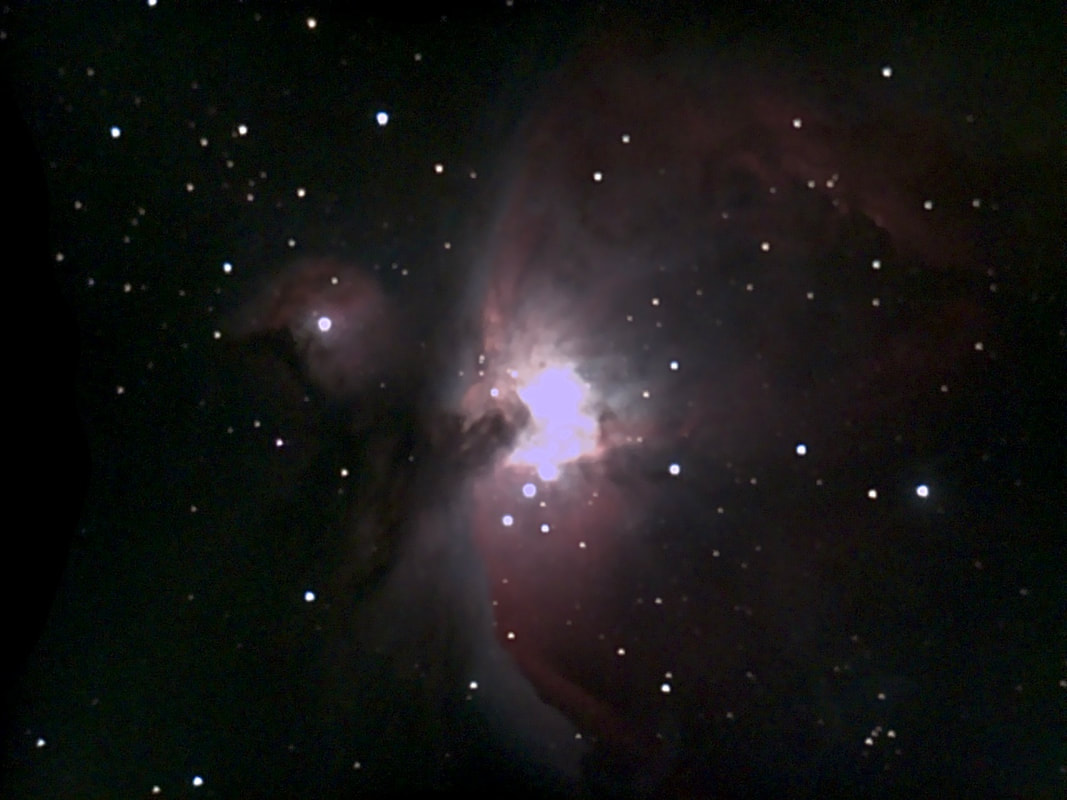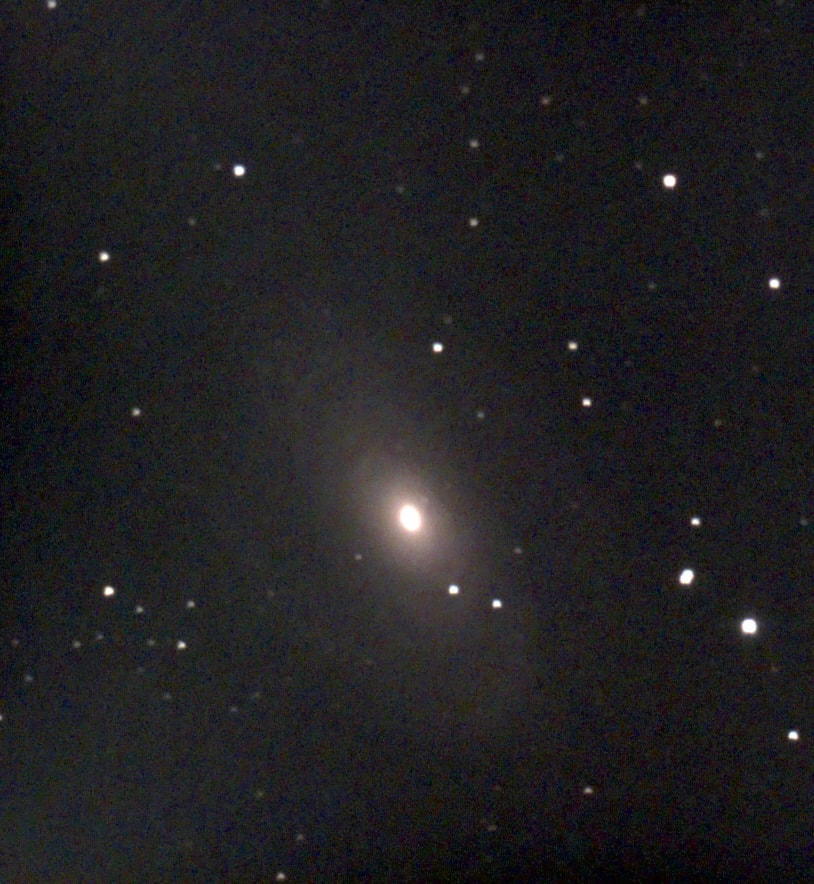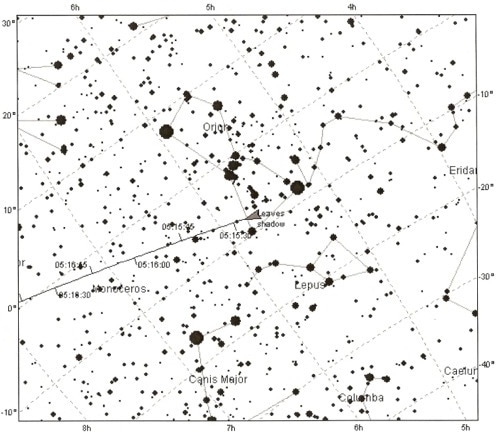|
It was a cold, damp night when I stepped out with the EVscope and found a relatively mud-free corner to set up in my park. I decided to try my hand at collimating the telescope to see if that might tighten the stars in my pictures, and I hoped to decide, once and for all, whether to keep the telescope before my refund period ran out. To my surprise, the telescope was badly out of focus when I turned it on - so out of focus that its auto-alignment failed. Fortunately, it comes with a bahtinov mask cleverly built into the dew shield. Achieving rough focus, and then fine focus with the mask, takes a matter of seconds. With that done, the telescope immediately found alignment, and I got it to slew to Bellatrix, a fairly bright star in Orion. Now I turned the focuser knob until a dark cross appeared in front of the suddenly bloated star: the spider vanes holding up what would be a secondary mirror in most reflectors (but is a sensor in the EVScope). The cross was badly askew, which means that the telescope was poorly collimated. It took all of 30 seconds or so to fix the problem, and even less time to achieve fine focus again. And then, voila: the stars were more closely to dots - rather than smeared blobs - and the resolution of the telescope suddenly seemed higher. Funny how that works. I tried my hand at imaging a few objects: the Orion Nebula, of course, and the Flame Nebula, Bode's Galaxy, and the little galaxy NGC 1637. The latter was a bust: it's very small, and lost in the glow of light pollution to the south. An unavoidable problem for me is that the EVScope amplifies both the light of deep space objects and the light pollution in our DC skies. It's not a problem for brilliant objects like the Orion Nebula or the Andromeda Galaxy, but dim, diffuse objects are another story. I also didn't take exposures longer than five minutes. It's one thing to gawk at the Moon or Mars for that long - or much longer - but another thing to sit silently in the cold, waiting. But was it ever cool to see the spiral arms of Bode's Galaxy, slowly brightening on my screen as the minutes and seconds ticked by. Here were photons 12 million years old, from a galaxy nearly the size of our own, somehow visible in an urban sky. The view was quite sharp, I thought, and the telescope performed perfectly, immediately slewing to whatever I asked it to find.
Do I prefer my optical telescopes? Yes, for most objects I do, but it's simply true that the EVScope shows me hundreds of nebulae and galaxies that I never imagined seeing from the city, and reveals glorious detail in wonders I thought I already knew well. It's a keeper. Now if only I could get a lightweight, go-to mount for my refractors . . . .
0 Comments
Leave a Reply. |
Archives
March 2024
Categories
All
|





 RSS Feed
RSS Feed